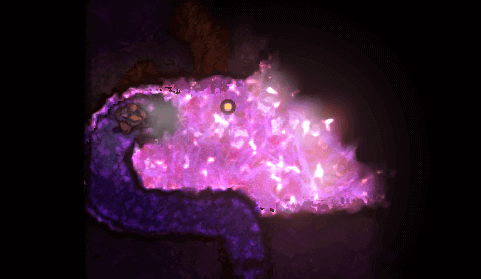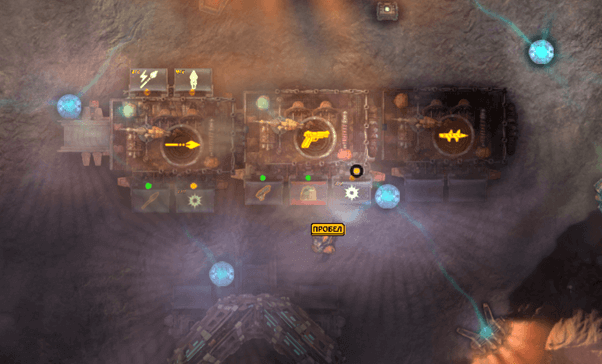Is Lumencraft the successor to The Riftbreaker or another Tower Defense?

"Deep Rock Galactic and Hidden Deep walk into a bar and order two beers. Sip after sip, their tongues are loosened, but an argument ensues. - I'm the best game about the mine! Better co-op and humor are the key to success," proudly chants Deep Rock Galactic. - No, you've got no atmosphere and no story. A mine is not a fun place, and you've probably forgotten about it. I'm the best underground game and you're..." replies Hidden Deep, but before he could finish, Deep Rock Galactic interrupted him: - "You're an indie trash! What are you talking about?" "Don't fight, girls," interrupts the barman, "because the main thing is that we're all about the place where the sun doesn't shine...About the mines." ...That bartender was Lumencraft, another variation on the miner simulator. But unlike the first and second contestants, Lumencraft is neither a cooperative shooter nor a story-driven survival-horror. Lumencraft is a top-down shooter and Tower Defense real-time strategy game in one package. This cocktail smells interesting, but what does it taste like?
Lumencraft - Full Release Trailer
"Amateur" is not a sentence
From the first minutes the source of inspiration for Lumencraft is guessed without references and Easter eggs - this game is really The Riftbreaker, but without manned robots a la Titanfall 2, and without open spaces - only mines, only hardcore. The Riftbreaker and Lumencraft also share a gameplay core: the player appears in a location with valuable resources, the player fights off waves of enemies and upgrades the base. The base is the main building in the game, it powers the other buildings, allows you to mine lumens at the expense of the timeout between waves, can cause a blast wave at great risk to the player, and revives the player himself if he died in an unequal fight with the inhabitant of the mine. Lumencraft can't be called a copycat, it's more of a mixture of ideas. For example: from The Riftbreaker here is the concept and gameplay core, from Deep Rock Galactic - procedurally generated locations and the feeling of rock drilling, from Hidden Deep - emphasis on the atmosphere of unexplored dungeons with aggressive fauna; and in Lumencraft, and in Hidden Deep the audio design is oppressive, mysterious - sets the right mood. The only original thing about Lumencraft is that you can customize the game in any way you want, it's not limited to the level editor. But the principle remains the same - mining lumen and metal to build buildings.

It all sounds pretty boring until you try it yourself. Yes, Lumencraft takes a long time to rock and take its time to charm. The devil, as always, lies in the details. Since the game is session-based, the conventions come at the will of the game. You dig a tunnel, you come across a strange glow, you drill for the sake of interest... it turns out it was lava... The tunnel is filled with molten rock according to all the laws of physics.

In that case, you have to forget about nearby resources. Unlike Deep Rock Galactic, where there were about ten different resources, in Lumencraft there are only two, which somewhat detracts from the strategic aspect of the game. Yes, there is a hub between sessions, where the player is free to buy improvements before the next session - there is a kind of meta-progression.

Yes, the best thing about this game is the chagrin between shooter and strategy. Are both genres successful...?
Shooter or strategy?
To answer the question: the game is neither fish nor meat. The shooter here is very viscous and not dynamic. Before buying the necessary upgrades the character moves very slowly, for some reason they screwed Souls'like mechanics: the protagonist's stamina is strictly limited and spent literally on everything - on leisurely running, on melee weapon strikes, on jerks. It is understandable that the endurance mechanic was added for the sake of balance, because the essence of the game is to have time to build, and to mine resources, and to shoot the inhabitants of mines, but this mechanic smells badly of artificial limitation. There aren't many weapons in the game, bullets fly slowly, and ammo is not only limited, but it also takes up precious slots in the inventory. You can put much more useful things into those slots - repairing set for buildings, for example. In addition, shooting in this game is uncomfortable, and you still need to get to a decent firearm, all of which takes hours of real time.

As a strategy game Lumencraft is better, but not by much. The mechanics of the buildings and their purpose are quite interesting here. Whereas in classic strategies the buildings basically open up the next stages of the progression, in Lumencraft each building has its own applied function. For example: if you find an iron mine at the beginning of a session, you can bring electricity to it and passively earn metal.

The developers did not make a mistake with the design of the building, here it is made in the form of a radial circle - no clumsy interfaces. The image of buildings in the circle is drawn correctly, which gives an idea of the approximate size of the building. It would seem to be a small thing, but those who have played strategy in competitive mode know the value of seconds of delay.


...Any of the buildings can be demolished with a return of resources, which in the case of Lumencraft is critical. The point is that many buildings are...just useless. The same barrier only delays the wave and is expensive - in terms of resources, normal defensive structures would cost about the same amount.
The second half of the buildings are the things without which it would be impossible to pass a difficult level. The same crusher seems useless until you see the amount of resources it produces. The same goes for turrets - a key building for any Tower Defense. There are some turrets that are necessary to build, and some that become obsolete almost immediately, no matter how you improve them. Also, turrets can damage each other for some reason and are slow to deploy. The balance of the game is such that the game imposes on the player a certain style of play and sequence of actions tighter than a linear game does. There is no variation in Lumencraft, but there are clear algorithms for action.
Conclusion
Depending on the region, the price of Lumencraft varies markedly. The objective price of the game is up to $10. The potential is noticeable, but so is the developer's lack of experience. The final buying decision will have to be left to fresh reviews, for Lumencraft is extremely non-static and evolving. But the root mechanics and the idea are worth the attention. Fans of over-the-top shooters will enjoy the game much less than strategy fans.
